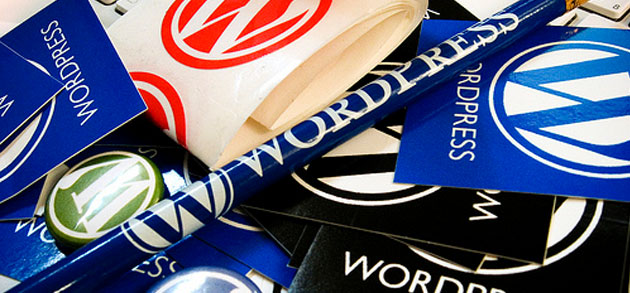I liked my previous website. It was one of the first I ever built from scratch using a good measure of html, a dash of CSS and a sprinkling of JavaScript and it allowed me to begin getting the Scribble name out there into the digital world. However like the majority of things online, it started to become out-dated sooner rather than later. With the arrival of Web 2.0, social media and blogging, I realised my web presence needed to adapt. There was a problem though. How do I go about not only implementing the tools to cater for these features, but also keep them updated day to day with the little time that I have after finishing my actual work?!
I admit I was never a fan of WordPress to begin with. I thought using pre-made templates would be restrictive and “cramp my style”. But the more research I did the more my pros list seemed to outweigh the cons. In the end there were 4 major reasons why I took the jump and developed my new website design using WordPress. Check them out before you decide on a business website as they may apply to your situation as well.
1. Ease of maintenance
I am always looking to get more done in less time. This extends to updating my website with the latest news, projects, glitz and glamour that occurs in the world of Scribble Graphic Design. Ok, maybe not so much glitz and glamour… Don’t get me wrong, updating my traditional html-based website could be achieved without too much fuss. However WordPress’s convenient CMS makes posting my new artwork and updating page content a faster process. It also allows me to do this without the need for me to delve into too much HTML or CSS coding, making it an ideal solution for those that would also like to avoid this when maintaining their website.
2. Social media integration
One of the things I really want to do more of is connect with people on social networking platforms like Facebook and Twitter. WordPress’s ability to seamlessly integrate with these networks via the use of plugins helps me to achieve this more efficiently. Visitors to my website can now begin following me on social media and share my content at the click of a button. Additionally I can post messages including links and images to all my social media pages straight from the WordPress CMS, meaning I can share new content with all my followers easily.
3. Convenient blogging platform
Another exercise I am starting to devote my time to more is blogging. Doing so not only allows me to share my experiences and knowledge with fellow small business owners and visitors to my website, but also promote conversation around topics of interest from others via which I can learn more too. As a result I needed a simple way to post my latest blog articles from week to week with little complication. This was another box that the WordPress platform ticked for me. Uploading photos, categorising posts and publishing content can be performed quickly, whilst readers are able to easily filter pieces to find the information they need and leave comments where desired.
4. Availability of numerous plugins
Modern website design is continuing to implement more and more interactive elements that enhance the user experience. Possessing the ability to add these type of features without the need to dive into complex coding language such as JavaScript and jQuery saves a lot of time and effort. WordPress websites provide this with thousands of both free and paid plugins being developed and made available to users around the world. From image galleries and feature sliders to social media integration tools and form solutions, these plugins allow users with little web development knowledge to deploy complicated functions on their website that help engage their visitors more effectively.

